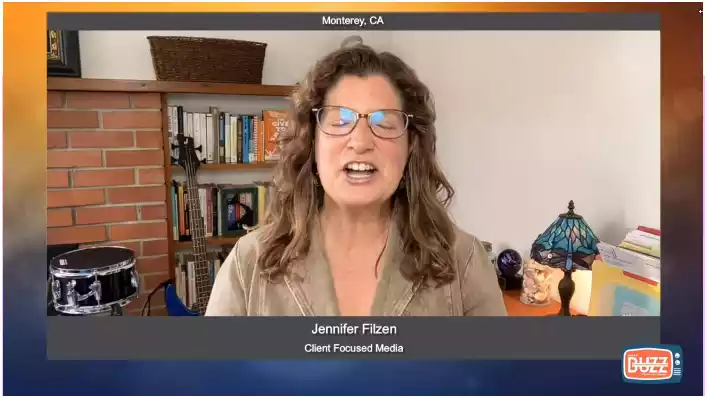Enhancing Efficiency by Automating Prior Authorization
Discover how the future of healthcare is going virtual and how automating prior authorization is transforming medical services. Explore what's next in this exciting shift!

When you need to submit a Prime Therapeutics prior authorization form, it’s essential to ensure that all required information is accurately provided to avoid delays in processing. This form is used to request approval for medications that may not be covered under a standard prescription plan without prior authorization. You can usually obtain this form through Prime Therapeutics’ website or directly from your healthcare provider, who will assist in completing and submitting the necessary documentation to the insurer. Ensuring all details are correctly filled out can help expedite the approval process and avoid unnecessary delays in receiving medication.
Get Started Today!
Table of Contents
Automating Prior Authorization

Understanding Prior Authorization’s Role
Prior authorization ensures that payers approve medical services before they are administered. It also confirms that the proposed treatment is medically necessary and falls within the patient’s insurance coverage. Healthcare providers rely on authorization to avoid procedures and manage costs effectively. The intricacies of insurance policies and covered services necessitate authorization as a validation point. It ensures that the care aligns with the standards outlined by insurance providers, preventing rejected claims that could result in setbacks and patient dissatisfaction. Despite its significance, manually handling the authorization process presents challenges such as time consumption and error-prone procedures. The traditional method often results in delays in patient care.
The Advantages of Automating Prior Authorization
Automating authorization presents a solution to many of the hurdles posed by procedures. By utilizing technology, healthcare providers can significantly boost efficiency, cut costs, and enhance patient care outcomes. One of the perks of automation is the reduction in workload. Automated systems streamline the process, minimizing the need for interference. Healthcare professionals can now devote attention to care instead of being bogged down by paperwork. Another key benefit is cost savings. Automation helps minimize errors and denials, reducing the need for rework and appeals. It also streamlines the approval process, enabling patients to access treatments and ultimately enhancing their overall experience.
How Automation Works in Prior Authorization
Implementing automation in authorization involves integrating systems into existing healthcare structures. These systems are specifically designed to handle the complexities of authorization requests accurately. The process kicks off with submitting information and treatment plans to the payer. Automated systems swiftly analyze this data against policy criteria, identifying any issues before they lead to delays. The following review, the request is. Marked for further assessment. Seamless integration is crucial for automation. Healthcare providers require systems that seamlessly link with their health records (EHR) and practice management platforms. This ensures access to all information while minimizing redundant efforts.
The Struggles with Manual Prior Authorization

Real-world Success Stories
Numerous healthcare providers have effectively transitioned to automated authorization systems, showcasing the advantages of this technology. For example, a central hospital system in the Midwest recently implemented an automated tool. It saw a 30% decrease in the time it takes to process authorizations, resulting in quicker patient care. Another instance involves a clinic in California that incorporated automation into its operations. The clinic witnessed a drop in rejected claims, which improved their management. Patients also enjoyed access to treatments, which led to higher satisfaction levels. These real-life examples showcase how automated prior authorization can revolutionize healthcare practices. Providers who have embraced this technology have seen efficiencies, lower administrative expenses, and better patient results.
I'm very thankful for Portiva who I know is looking after my practice while I'm gone the virtual assistants can manage prescription refills, documents they can triage patients and just kind of answer administrative questions and they can handle a lot on their own. But also, they're very good about contacting me if there's any emergency or anything I need to attend to. So I'm very thankful for Portiva they can help almost any provider almost anywhere and it really allows for some good work-life balance as I'm getting to experience right now at my family farm so I'm very thankful for Portiva and I'm very happy to use their services"

Board Certified Family Medicine Physician

Portiva's Virtual Medical Assistant - I have all the support I need. There's somebody checking my email, any patient messages. Patients are still able to schedule and handle any scheduling issues and any kind of billing that needs to still go through. Portiva hands handles it all for me. I have support i have somebody that I can access 24/7 pretty much. It's all very seamless. If somebody has an emergency or needs a medication called in. I know that the va's at portiva will handle that for me.

Board Certified Family Medicine Physician

The Future of Automated Prior Authorization

Essential Factors to Consider When Implementing Automation
While the advantages of automating authorization are significant, healthcare providers must consider crucial aspects before proceeding. The primary concern is ensuring that staff receive training. All employees must be proficient in utilizing automated systems to leverage their capabilities fully and ensure operations. Lack of exercise could impede the effectiveness of automation due to resistance to change.
Another critical factor is selecting the technology partner. Providers should meticulously assess vendors based on their experience, scalability, and support services. A robust solution should address needs and be adaptable to future changes in healthcare regulations and insurance practices. Additionally, involving stakeholders such as staff and administrative teams in decision-making can help identify specific requirements and facilitate a smoother integration of automated solutions.
Lastly, it is essential to establish evaluation processes and feedback mechanisms to measure the automated authorization system’s efficacy. Regular assessments will offer insights into performance and user satisfaction, enabling enhancement and adjustment to evolving healthcare environments. By recognizing these considerations, healthcare providers can establish a groundwork for automation that provides enduring benefits.
Conclusion

To learn more about claims processing that can enhance your medical practice. Discover more about Portiva and unlock a world of possibilities by visiting our homepage today!
- Integrating prior authorization systems
- Prior authorization timelines
- Optimizing prior authorization
- Collaborative prior authorization
- Prior authorization trends
- Prior authorization and patient experience
- Impact of prior authorization policies
- Advanced analytics in prior authorization
- Ensuring compliance in healthcare prior authorization
- International approaches to prior authorization processes
- Global best practices for streamlined healthcare delivery
- Comprehensive guide to reviewing and updating your prior authorization policies
- Customized strategies for prior authorization
- Revising prior authorization policies for better patient outcomes
- Multidisciplinary methods to simplify prior authorization
- Revealing prior authorization costs
- Trends in prior authorization technology
- Collaborative solutions in prior authorization
- Prior authorization for providers

